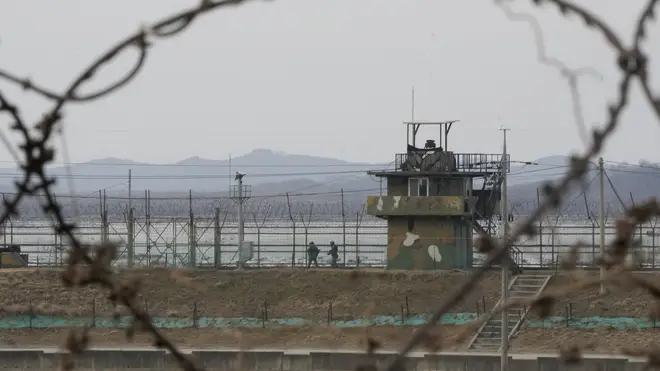
Clive Bull 1am - 4am
5 January 2022, 11:34

It was the first such launch in about two months and taken as a signal Pyongyang is not interested in rejoining denuclearisation talks.
North Korea has fired a ballistic missile into the sea, the US military said, its first such launch in about two months and a signal it is not interested in rejoining denuclearisation talks and would rather focus on boosting its weapons arsenal.
The launch on Wednesday came after North Korean leader Kim Jong-un vowed to further strengthen his military capability — without disclosing any new policies towards the US or South Korea — at a high-profile ruling party conference last week.
The US Indo-Pacific Command said the ballistic missile launch “highlights the destabilising impact of (North Korea’s) illicit weapons programme” but did not pose an immediate threat to US territory or its allies. It said in a statement that the US commitment to the defence of its allies, South Korea and Japan, remains “ironclad”.
South Korea’s military said a suspected ballistic missile fired from North Korea’s mountainous northern Jagang province flew towards its eastern waters. Defence Minister Suh Wook said the launch was seen as part of North Korea’s military build-up, but that South Korea was analysing whether it had any political intention.
In an emergency video conference, members of South Korea’s presidential national security team expressed concerns about the launch and said resuming talks with North Korea was important to resolve tensions, according to the presidential Blue House.
The Japanese Defence Ministry also detected the North Korean launch. “We find it truly regrettable that North Korea has continued to fire missiles since last year,” Japanese Prime Minister Fumio Kishida told reporters.
China, North Korea’s most important ally, maintained an even-handed response to the launch, with Foreign Ministry spokesperson Wang Wenbin calling for dialogue and saying “all parties concerned should keep in mind the big picture (and) be cautious with their words and actions”.
Last autumn, North Korea carried out a spate of weapons tests, in what experts called an attempt to apply more pressure on its rivals to accept it as a nuclear power in the hope of winning relief from economic sanctions. The tests included a submarine-launched ballistic missile and a developmental hypersonic missile. After artillery firing drills in early November, North Korea halted testing activities until Wednesday’s launch.
The US administration has repeatedly said it is open to resuming nuclear diplomacy with North Korea “anywhere and at any time” without preconditions. North Korea has so far rebuffed such overtures, saying US hostility remains unchanged.
Outgoing South Korean President Moon Jae-in said in his New Year’s address on Tuesday that he would continue to seek ways to restore ties with North Korea and promote peace on the Korean Peninsula until his single five-year term ends in May. He has recently pushed for a symbolic declaration to end the 1950-53 Korean War as a way to reduce animosity.
US-led diplomacy aimed at convincing North Korea to abandon its nuclear programme collapsed in 2019 because of differences over how much sanctions relief should be given to North Korea in return for limited denuclearisation steps. Kim Jong-un has since threatened to enlarge his nuclear arsenal, though his country’s economy has suffered major setbacks due to the Covid-19 pandemic, persistent US-led sanctions and his government’s mismanagement.
Leif-Eric Easley, a professor at Ewha University in Seoul, said: “Rather than expressing willingness for denuclearisation talks or interest in an end-of-war declaration, North Korea is signalling that neither the Omicron variant nor domestic food shortages will stop its aggressive missile development.”
Kim Dong-yub, a professor at the University of North Korean Studies in Seoul, said North Korea might have tested a hypersonic missile or a nuclear-capable KN-23 missile with a highly manoeuvrable and lower-trajectory flight. He said North Korea would probably move forward with its military build-up.
During last week’s plenary meeting of the central committee of the ruling Workers’ Party, Kim Jong-un repeated his vow to boost his country’s military capacity and ordered the production of more powerful, sophisticated weapons systems. State media reports on the meeting said North Korea set forth “tactical directions” for external relations, including with South Korea, but did not elaborate. The reports made no mention of the US.